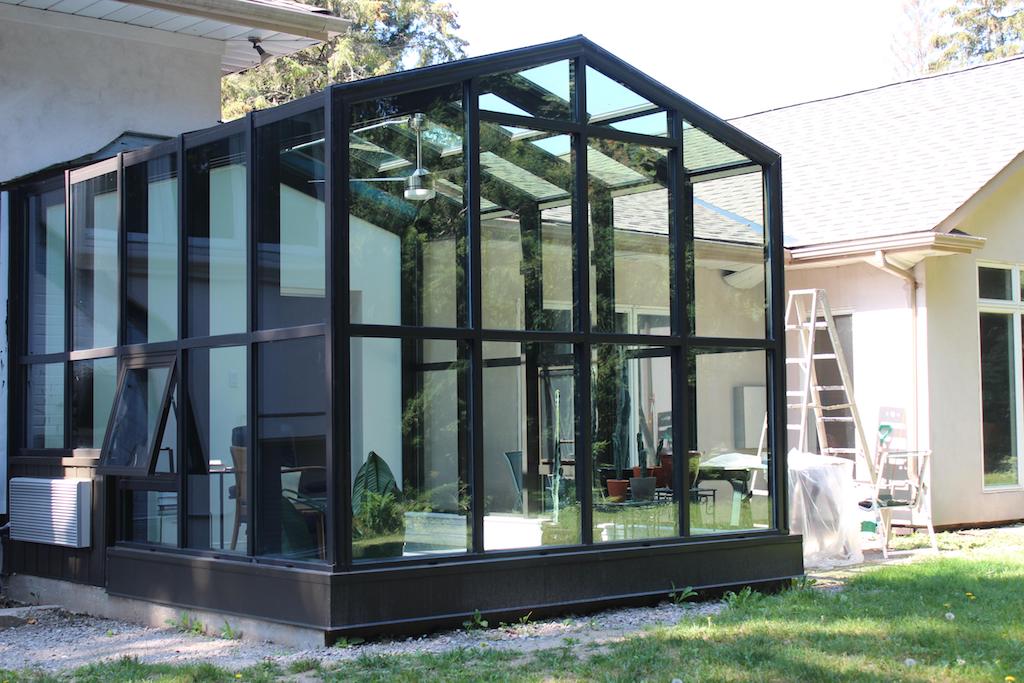Groundhogs can turn into a real headache when they choose your property as their new home. These creatures weigh up to 14 pounds and stretch 2 feet long. You’ll need to deal with them quickly once these large rodents start tearing up your yard, garden and the basic structure of your property.
These diggers, which people also call woodchucks or “whistle pigs,” build impressive underground networks. Their tunnels can stretch 50 feet and have several entry points. The damage gets serious when groundhogs settle under your house or shed. They weaken foundations, tear up driveways and create unsafe conditions. Your carefully grown flower and vegetable gardens won’t stand a chance against their huge appetite. The biggest clue that groundhogs have moved in is a wide hole, about 10 to 12 inches across, with dirt piled around it.
This complete guide will help you protect your property from these destructive yet intriguing animals. We’ll get into methods that work to remove groundhogs from your yard, under your shed, or beneath your house. The solutions range from natural deterrents to physical barriers that actually keep them away.

Identifying Groundhog Activity in Your Yard
Early detection of groundhogs can protect your property from major damage. You need to identify these unwanted visitors before you try any removal methods.
Common signs of groundhog presence
A groundhog’s burrow system is the clearest sign of their activity. You’ll spot large entrance holes that are 10-12 inches wide with big dirt mounds nearby. These creatures are different from other burrowing animals because they build complex underground networks that stretch up to 50 feet. Each system has one main entrance and up to four escape holes near trees, fences, or building foundations.
These hardworking animals can really dig – one groundhog moves about 700 pounds of soil to build a single den. On top of that, they don’t just stop at one burrow – they might create up to five dens in their area. This much digging leads to:
- Clear paths between feeding spots and burrow entrances
- Weak spots in your lawn from tunnels below
- Grass paths turning yellow where tunnels run underneath
- Foundations sinking under sheds, porches, or other structures
- Water not draining well during rain
These creatures leave obvious signs of their eating habits too. A groundhog eats up to 1.5 pounds of plants every day. Look for cleanly cut plant stems and bite marks on fruits and vegetables in your garden. They love leafy greens, beans, peas, carrots, and various fruits.
How to confirm it’s a groundhog and not another animal
People often mix up groundhogs with gophers or prairie dogs. But there are clear differences between them:
Groundhogs are much bigger than gophers – about as big as a house cat. Their footprints show five toes on back feet and four on front feet with clear claw marks. The gaps between tracks usually measure 4 to 12 inches.
Gophers stay underground most of the time, but groundhogs come up to the surface and you can see them during the day. They also have whiter teeth than gophers, whose teeth look yellowish.
These animals are quite clean too. They use one special chamber in their burrow just for waste. Sometimes they even clean out old droppings and bury them outside.
When and where groundhogs are most active
Groundhogs stay busy during daylight hours. They’re most active early in the morning and late afternoon, especially in summer when they feed or bask in sunlight.
These animals adapt well to different places. They do great in bushy areas near fields, pastures, and small woods. Their favorite spots change with seasons – they pick open fields, suburban yards, and gardens in spring and summer, then head to wooded areas for fall and winter.
A groundhog won’t go more than half a mile from its burrow. They follow a yearly cycle and hibernate from October through March or April, depending on the region. The males wake up before females, and right after waking in March, they mate. Females then have four to six pups in April.
Natural and Humane Ways to Get Rid of Groundhogs
You don’t need harsh chemicals or lethal methods to deal with groundhogs. Natural deterrents can make these stubborn visitors find a new home.
Epsom salt and castor oil applications
Groundhogs hate the taste of Epsom salt, which makes it a great way to mark boundaries around gardens and yards. You can sprinkle Epsom salt around your garden’s edges and near burrow entrances. A tin pie plate filled with salts near vulnerable plants adds extra protection. The salt needs to be reapplied after rain to work well. Epsom salt won’t damage your plants—it actually gives them beneficial magnesium.
Castor oil is another powerful deterrent that groundhogs stay away from. You can make a simple repellent by mixing ½ cup of castor oil with 2 cups of water and spraying it around burrow holes. A stronger mix combines castor oil with water (three parts oil to one part liquid detergent) in a spray bottle. Add lukewarm water and shake well before use. Make sure to spray when groundhogs are away from their burrows so they can relocate instead of getting trapped.
Using predator urine and soiled kitty litter
Coyotes and foxes naturally hunt groundhogs, so their urine works as a deterrent. Store-bought predator urine products trigger fear in groundhogs, even if they’ve never seen these predators before. The urine works best when applied around burrow entrances and property edges. Remember to add more after heavy rain.
Used kitty litter makes use of predator scent to scare groundhogs away. Pour the soiled litter around one burrow entrance but leave another exit hole clean. This smart approach gives groundhogs a way out instead of trapping them, which means they’re more likely to leave for good.
Hair clippings and garlic as scent deterrents
Human hair clippings tell groundhogs that humans—who they see as threats—are nearby. Put hair in mesh bags and stake them around your garden or near burrow entrances. This creates an invisible boundary that makes groundhogs uncomfortable enough to move away.
Groundhogs can’t stand garlic’s strong smell. You can crush garlic cloves and spread the paste around areas you want to protect. Another option is to make a spray by mixing crushed garlic with water in a spray bottle and applying it where groundhogs visit often.
Essential oils and vinegar sprays
Essential oils like lavender, lemongrass, rosemary, thyme, and peppermint keep groundhogs away with their strong scents. Mix 5-10 drops of these oils with water in a spray bottle and use it around gardens and burrow entrances. These oils work even better when combined with apple cider vinegar, which groundhogs really hate.
White vinegar alone works well as a simple repellent because groundhogs have a keen sense of smell. You can pour it directly into burrow entrances and around their edges. Apple cider vinegar smells stronger and works better. The best mix combines vinegar with ammonia, cayenne pepper, and liquid dish soap. Spray it generously at burrow entry points and add more after rain.
Planting herbs groundhogs dislike
Smart planting creates natural barriers groundhogs won’t cross. You can surround your garden with:
- Lavender, basil, mint, and lemon balm
- Chives, garlic, and onions
- Thyme, rosemary, oregano, and sage
These fragrant herbs create an invisible barrier that groundhogs avoid. Other plants that keep groundhogs away include wormwood, catmint, foxglove, and bleeding heart. Placing these around garden borders looks good and keeps groundhogs out.

How to Get Rid of Groundhogs Under Sheds and Houses
Groundhogs that make burrows beneath structures create serious risks to foundations and stability. These “underground architects” can dig up to 700 pounds of soil for a single burrow system and undermine your valuable property.
How to get rid of groundhogs under shed
You need a smart plan to remove groundhogs from under sheds. The first step uses harassment techniques that encourage them to leave on their own:
- A radio placed near the burrow entrance creates persistent loud noise
- Ammonia-soaked rags applied directly under the structure work as repellents
- Motion-activated animal alarms near main entrances help deter them
One-way exclusion doors become your next best option if these methods don’t work. Groundhogs can exit through these devices but cannot return. Commercial doors give the best results, though wooden ones built to specific designs also work. The breeding season matters – you should delay removal when young groundhogs might get trapped under the structure.
How to get rid of groundhogs under house
Your house foundation and structural integrity face severe damage from groundhog burrows. Professional removal offers the safest solution for homes with groundhog problems that are several years old. Licensed nuisance trappers can remove problem groundhogs quickly for a fee. Local ordinances about wildlife trapping need verification before hiring professionals, especially within city limits.
The next step involves repairing potential entry points with materials groundhogs cannot easily remove or dig through – gravel, sand, concrete, or clay work best. Regular soil or mulch should be avoided as these decompose easily and might attract groundhogs.
Installing underground fencing or mesh barriers
Underground fencing provides the best long-term solution to keep groundhogs out. A proper barrier must:
- Use heavy-duty galvanized wire or hardware cloth (20-gage commercial-grade)
- Go at least 6-12 inches below ground
- Have an L-shaped bend pointing outward at the bottom
- Stand at least 3 feet above ground, with a 45-degree angle at the top
- Be buried 10-12 inches deep with the lower edge bent outward
The mesh should surround the entire perimeter of vulnerable structures. Make sure no gaps exist between fence sections.
Sealing off uninhabited burrows safely
Empty burrows need confirmation before sealing. A simple “paper test” works – cover hole entrances loosely with paper and watch for 72 hours. An undisturbed paper means the burrow sits empty. Burrow sealing should not happen during winter months (November-March) when groundhogs hibernate.
Gravel, sand, or clay make excellent filling materials that groundhogs cannot easily remove. Multiple-entrance burrow systems need all openings found and sealed at once to stop groundhogs from making new exits. Keep watching the area for new digging activity and seal again if needed.
Physical Barriers and Deterrents That Work
Physical barriers work best to stop groundhogs from invading your property. These structural deterrents protect your property better than quick fixes that don’t last.
Building effective fences and row covers
Your groundhog fence needs specific design features to work well. Here’s what you need:
- A fence at least 3 feet high with its top 12-15 inches bent outward at a 45-degree angle so groundhogs can’t climb
- The bottom should be 12 inches deep and bent outward in an L-shape to stop tunneling
- Use heavy poultry wire or 2-inch woven-mesh wire
You can make your fence even better by adding an electric wire 4-5 inches outside and 4-5 inches off the ground. Another option is to lay flat 3-foot-wide chicken wire around your garden’s edge with a 4-6 foot high fence set 6 inches back.
Row covers add extra protection, especially in vegetable gardens. These light synthetic fabrics let air, water, and sunlight through while keeping groundhogs out. You’ll find them in different weights and can either drape them right over plants or support them with simple PVC pipe or wire frames.
Using motion-activated sprinklers
Motion-activated sprinklers use water, movement, and noise to scare groundhogs away. These sprinklers spot movement from up to 40 feet away and spray water suddenly. Groundhogs learn quickly to stay away from areas protected this way.
Good sprinklers let you adjust coverage from small sections to full 360° watering and can spray up to 70 feet in diameter, which covers nearly 4,000 square feet. Many sprinklers come with day/night settings so they work when groundhogs are most active.
Why scare devices and sonic repellents fail
Sonic deterrents just don’t work on groundhogs, no matter what the ads say. Sonic spikes claim they send out sound waves to scare animals away, but lots of evidence shows they don’t affect groundhogs at all.
Groundhogs have strong “fight or flight” instincts that lean toward “fight”. They usually ignore repellents because staying in a comfortable spot matters more than dealing with minor annoyances. Research shows physical barriers work much better than sonic devices or scare tactics.
How to keep groundhogs out of garden
Raised garden beds work great to keep groundhogs away from your plants. The height alone makes it hard for them to get in.
A tidy landscape helps prevent groundhogs from settling in. Remove brush piles, woodpiles, and anything they might use as cover. You can also try putting beach balls, mylar balloons, pinwheels, or wind chimes around your garden – these shy creatures often stay away from such items.
When to Call a Professional for Groundhog Removal
DIY methods don’t always work with groundhogs. You should know the right time to call professionals to save your time and prevent property damage.
Signs you need expert help
You’ll need professional wildlife removal services when:
- The groundhog’s burrow system is so big it might damage your building’s structure or foundation
- Your foundation shows cracks, your basement feels damp, or the floors aren’t level anymore
- A single groundhog moves up to 700 pounds of soil to build their den
- Your DIY removal attempts haven’t worked
- The burrows are in tricky spots like under your porch, deck, or concrete structures
- You’re worried about diseases since groundhogs can carry rabies, ticks, and parasites
Stubborn groundhog problems that might damage your property need expert help.
What to expect from wildlife control services
Wildlife control experts start by checking your property to find all burrow entrances and see how much damage there is. They use their knowledge of groundhog behavior to remove them safely and humanely.
Most services catch groundhogs alive and move them to suitable places away from homes. The professionals seal off entry points after removal and put up barriers to keep groundhogs out.
Many companies use what they call “Integrated Wildlife Management” – a mix of different strategies that work better than just one method. Good services also keep an eye on things afterward and give you tips to protect your property.
Legal considerations for trapping and relocation
Make sure you know your local rules before trying to remove groundhogs. Different states have their own laws about trapping and moving wildlife.
Some places want you to have permits to trap groundhogs. Maryland doesn’t need permits but says you must get permission from landowners before releasing groundhogs in new areas. Professional wildlife services know these rules and have the right licenses.
The timing matters too. Don’t move groundhogs in spring when babies might be in the den or in fall right before hibernation – they won’t have enough time to make new winter dens. Wildlife pros know these seasonal issues and plan their work at the right time.
Summing all up
Patience and smart planning help deal with groundhog invasions. These creatures create unique problems because they dig well and never give up easily. In spite of that, homeowners can choose from many proven solutions that work.
Natural deterrents like Epsom salt, castor oil, or essential oils can solve minor groundhog problems. These solutions work best especially when you have early signs, before groundhogs make your property their home. On top of that, planting herbs like lavender, mint, and thyme creates natural barriers these animals usually avoid.
Physical barriers are without doubt the best way to keep these determined diggers away long-term. A proper fence both above and below ground blocks access and stops tunneling. Raised garden beds also protect your vegetables well.
Groundhogs living under structures create bigger challenges. Simple scare tactics might work for occasional visitors, but permanent residents need exclusion doors or expert help. Once removed, you must seal all possible entry points to stop them from coming back.
DIY methods don’t always work, and sometimes you need professional help. Large burrow systems that threaten your home’s foundation, failed removal attempts, or disease risks are clear signs to call experts. Professional wildlife services have special tools and knowledge to remove groundhogs humanely while following local laws.
Using these strategies consistently helps homeowners take back their yards and gardens from these busy rodents. Success comes from knowing groundhog behavior, using the right deterrents, and staying watchful for new invasions. This approach lets you enjoy your well-tended property while groundhogs stay safely somewhere else.
Here are some FAQs about how to get rid of groundhogs:
How do you get a groundhog to leave?
To effectively get rid of groundhogs under your house or shed, start by eliminating their food sources and sealing potential entry points. Using deterrents like motion-activated sprinklers can help encourage groundhogs to leave without harm. For how to get rid of groundhogs under house fast, consider using humane live traps baited with fresh vegetables, then relocating them at least 5 miles away.
What can I pour in a groundhog hole?
When learning how to get rid of groundhogs under shed or house areas, avoid pouring toxic substances that could harm the environment. Instead, use a mixture of castor oil and water (1:3 ratio) to make the burrow unpleasant without causing harm. For how to get rid of groundhogs in your yard, flushing their burrows with water can encourage relocation, but check local wildlife regulations first.
What smell do groundhogs hate the most?
Groundhogs particularly dislike strong scents like garlic, pepper, and predator urine when you’re trying to get rid of groundhogs under house or shed areas. Commercial repellents containing these odors can be effective for how to get rid of groundhogs in your yard. The smell of ammonia-soaked rags placed near burrow entrances also helps deter them as part of a comprehensive removal strategy.
What does it mean when a groundhog is in your yard?
A groundhog in your yard typically indicates they’ve found good food sources (like your garden) and suitable shelter, prompting the need to learn how to get rid of groundhogs under shed or house areas. Their presence might also suggest your property has ideal soil conditions for burrowing. Implementing how to get rid of groundhogs in your yard techniques becomes important to prevent potential foundation damage from their extensive tunneling.
Are groundhogs aggressive?
While generally not aggressive, groundhogs can become defensive if cornered or protecting their young, especially when you’re trying to get rid of groundhogs under house spaces. They’re more likely to flee than fight, which helps when implementing how to get rid of groundhogs under shed or yard areas. However, it’s always safest to use humane removal methods rather than direct confrontation.
How many groundhogs live in a burrow?
Typically only one adult groundhog occupies a burrow, except when mothers are raising their young, which is important to know when planning how to get rid of groundhogs under house structures. A single burrow system might have multiple entrances, making how to get rid of groundhogs in your yard more challenging. During winter hibernation, you might find more groundhogs sharing a burrow temporarily.









